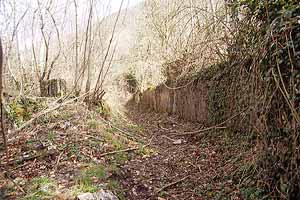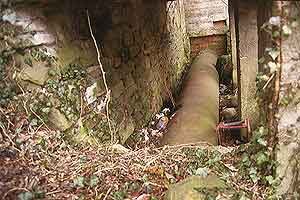All mills in the valley of the Río Ara
have at least one thing in common: there is no pond to store water (See f.e.
Fiscal,
Guaso, or
Jánovas).
The Río Ara always carries enough water to keep the stones
moving. The frustration of many millers, an unwanted stop and wait for an
embalse slowly
filling up, was unlikely to happen.
The mills share more characteristics which are typical for this way of working known as
moler de fila
.
Running with the limited supply of the pond was
moler de restañada
.
In order for the mill to behave
controllably a generous and uninterrupted watersupply was needed. The channel therefore is broad and deep
and ends in a rather big
cubo (see f.e.
Lacort). The depth and the size
of the cubo is meant to build up pressure and to smoothen out short hiccups
in the watersupply.
The gradient of the Río Ara being
rather small the canal of most mills is necessarily (very) long to make for
a sufficient water column.












